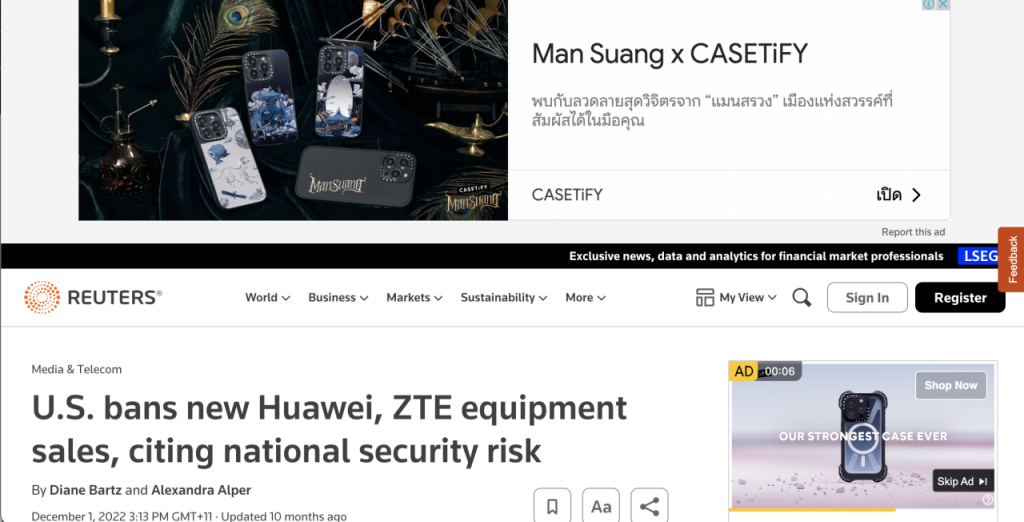Introduction
With the continuous development of science and technology, the use of the Internet has been integrated into people’s lives and become an indispensable thing. With the widespread use of the Internet, information has exploded. However, due to limitations in cognitive ability, people are overloaded with information and have to filter and make choices in front of countless information. However, Sunstein(2016) mentioned that if everyone in the world only chooses the information they want to obtain according to their own wishes, then the world everyone sees is only what they want to see, not the way the world originally is. , will also form an ‘ Information cocoon’. The diversity of information on the Internet is a double-edged sword. Although there is a diversity of information, people do not have the energy to accept it all. They can only filter and screen their preferred information, which limits the diversity of information they can obtain on the Internet.


Individual subjective choice is the main reason for the lack of diversity of information
Sunstein(2006) in “Infotopia: “How Many Minds Produce Knowledge” predicts the formation of online information cocoons and warns of the central problem of a communication universe in which people hear only what they want and choose only what comforts them. The emergence of information cocoon is due to the active choice of users and the passive choice of algorithms. Active choice refers to the active choice of users, and passive choice refers to the passive choice of algorithms, which is the content that the platform chooses to show users according to the preferences of users(Yu et al., 2022). For example, when a user continues to watch videos of food types on TikTok, TikTok will continue to push similar videos to the user, and the information received by the user will become more and more simple over time.


During Internet use, only 30% of users are actively searching, and the other 70% are receiving information(Pew Research Center, 2009). When users obtain information on the Internet, they are often affected by factors such as their own cognitive biases and psychological preferences, so they tend to obtain information that conforms to their own cognition, that is, users use the information they come into contact with to confirm their existing beliefs and views, while being protected from the influence of information contrary to their own views(Hou et al., 2023). This may deepen users’ inherent biases, leading to their self-perception biases and irrational inflation, making them more convinced of their own opinions and less tolerant of dissenting opinions, leading to a narrower perspective and heightened bia(Yuan & Wang, 2022). In addition, in biased information searches, people may get misinformation or false information due to unconscious bias, and more seriously, if people only seek information that supports their cognition, people will imprison themselves in information cocoons. Therefore, it is necessary to be open to conflicting information, and dealing with conflicting information may help open people’s minds and help people form critical thinking, so as to regain the diversity of information obtained on the internet(Peng & Liu, 2021).


The platform limits the diversity of information available to users through algorithmic analysis
In order to better consolidate the relationship with users, the platform will use algorithms to analyze users’ past behaviors, interests and preferences to provide content that matches users’ interests. Although it can increase user engagement and satisfaction, personalization algorithms may create “filter bubbles” where users are primarily exposed to content that reinforces their existing beliefs and interests, thereby limiting the opportunities to which users can be exposed to diverse perspectives(Eg et al. al., 2023). Personalization algorithms collect user information, such as browsing patterns, search terms, and purchase history, and based on this information, the algorithm develops user profiles and continuously pushes products or content related to the user’s tastes and interests(Staff, 2023). Facebook will begin serving ads to users based on their browsing history on the web and not just their activity on Facebook(Parsons, 2014), and ads based on search history will limit the diversity of buying ideas. It can also create filter bubbles, as the range of products accepted by users is limited to those they are already interested in. For example, if a user has searched for Casetify’s shopping website in Google, then when the user searches for other information on Google, the website page will most likely push Casetify ads. To sum up, the platform will recommend preferred products to users through algorithmic analysis, and it is difficult for users to access information content other than their past preferences.

Google delivers ads based on a user’s browsing history © 2023 by Yue Yu & Diane Bartz & Alexandra Alper is licensed under CC BY-NC-ND 4.0
The lack of diversity of information on the Internet is harmful
A lack of diversity of information on the Internet can exacerbate polarization of thinking and bias. All users obtain is information that is in line with their own cognition and preferences. This will lead to users’ extremely biased and one-sided way of thinking, believing deeply in their own cognition and opinions, and rejecting the integration of other opinions. It may lead to the user’s mental scope becoming narrower and narrower, and it is increasingly difficult to accept information outside their own cognition(Yuan & Wang, 2022).
The lack of diversity of information on the Internet may also create cognitive differences between audiences and groups, and in the long run, these differences may evolve into more significant social problems, such as social tearing(Yuan & Wang, 2022). And in the growing digital information cocoon, where individuals are primarily exposed to content that aligns with their pre-existing beliefs and preferences, a disturbing pattern has emerged that is characterized by the proliferation of unhealthy mindsets and attitudes, Leading to the problem of social division. Moreover, if Internet users accept attractive content recommended by information platform algorithms, they may suffer from addiction, cognitive dissonance, physical fatigue and other problems(Liu & Zhou, 2022).
In addition, with the development of the Internet, direct contact between people and society and other individuals decreases, and due to the limitations of information obtained on the Internet, it will lead to a loss of stickiness between users and society, and to a great extent Weakening the function of the group will lead to people’s lack of empathy and empathy(Carrier et al., 2015).


Supervision
- Government
Government regulation can have a significant impact on the information cocoon effect by influencing the strengthening of public information preferences. Governments can regulate the use of algorithms and increase transparency to ensure users have access to diverse information. And an algorithm supervision center can be set up to realize multi-agent supervision of algorithms, which helps ensure that the algorithm is not biased and promotes the diversity of information(Zhang et al., 2023). In addition, the government can also let the media help users understand how to find diverse information, thereby avoiding the formation of information cocoons.
- Platform
Platforms can oversee the algorithms they use to ensure they are unbiased and promote information diversity, which helps ensure users have access to diverse information. In addition, the platform can also help users improve algorithm literacy, that is, help users understand how algorithms work and how to find diverse information(Liu & Zhou, 2022).


- Individual
Individuals can realize that algorithms have an impact on the information they receive, and actively seek out different perspectives to help individuals broaden their horizons and receive diverse information. For example, reading news from different sources, discussing with people who hold different views, and searching the Internet for content that is not usually of interest.
Conclusion
In short, the main reason for the lack of diversity on the Internet is that users independently choose to receive information that conforms to their own cognition and preferences, and platforms use algorithms to limit the diversity of information users receive. Moreover, the lack of information diversity on the Internet will bring different harms to users and society. However, the government, platforms and individuals can respectively regulate the diversity of the Internet to help users receive diversified information.
References
Carrier, L. M., Spradlin, A., Bunce, J. P., & Rosen, L. D. (2015). Virtual empathy: Positive and negative impacts of going online upon empathy in young adults. Computers in Human Behavior, 52, 39–48. https://doi.org/10.1016/j.chb.2015.05.026
Eg, R., Demirkol Tønnesen, Ö., & Tennfjord, M. K. (2023). A scoping review of personalized user experiences on social media: The interplay between algorithms and human factors. Computers in Human Behavior Reports, 9, 100253. https://doi.org/10.1016/j.chbr.2022.100253
Hou, L., Pan, X., Liu, K., Yang, Z., Liu, J., & Zhou, T. (2023). Information cocoons in online navigation. iScience, 26(1), 105893. https://doi.org/10.1016/j.isci.2022.105893
Liu, W., & Zhou, W. (2022). Research on solving path of negative effect of “information cocoon room” in emergency. Discrete Dynamics in Nature and Society, 2022, 1–12. https://doi.org/10.1155/2022/1326579
Parsons, R. (2014, October 15). Facebook to serve ads based on web browsing history. Marketing Week. https://www.marketingweek.com/facebook-to-serve-ads-based-on-web-browsing-history/
Peng, H., & Liu, C. (2021). Breaking the information cocoon: When do people actively seek conflicting information? Proceedings of the Association for Information Science and Technology, 58(1), 801–803. https://doi.org/10.1002/pra2.567
Pew Research Center. (2009). Part 3: Network diversity and community: The role of the internet and mobile phones. Pew Research Center: Internet, Science & Tech. https://www.pewresearch.org/internet/2009/11/04/part-3-network-diversity-and-community-the-role-of-the-internet-and-mobile-phones/
Yuan, X., & Wang, C. (2022). Research on the formation mechanism of information cocoon and individual differences among researchers based on information ecology theory. Frontiers in Psychology, 13. https://doi.org/10.3389/fpsyg.2022.1055798
Yu, P., Liao, Y., & Mahendran, R. (2022). Research on social media advertising in China. Handbook of Research on Global Perspectives on International Advertising, 88–122. https://doi.org/10.4018/978-1-7998-9672-2.ch006
Staff, G. 39 M. (2023, August 8). Marketing algorithms – a personalization superpower. https://www.gate39media.com/algorithms-and-marketing-a-match-made-in-personalization-heaven /
Sunstein, C. R. (2006). Infotopia : how many minds produce knowledge. Oxford University Press.
Zhang, X., Cai, Y., Zhao, M., & Zhou, Y. (2023). Generation mechanism of “information cocoons” of network users: An evolutionary game approach. Systems, 11(8), 414. https://doi.org/10.3390/systems11080414

